30 Best Tourist places in Leh LadakhIn India's Kashmir region, Ladakh is a union territory. The world's coldest desert extends from the Siachen Glacier to the main Great Himalayas. Ladakh is welcoming to visitors and has a culture related to Tibetan culture. 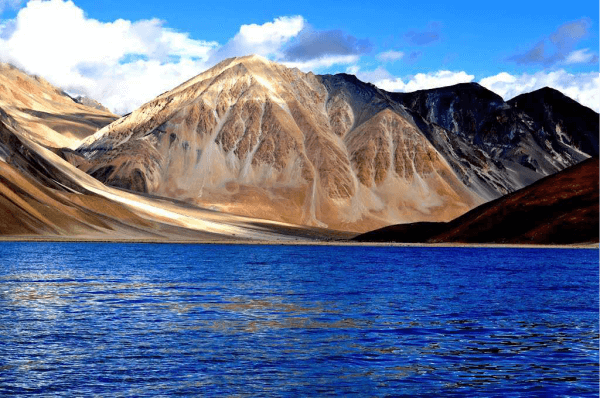
In Ladakh, there are lots of people who like to go rafting and hiking at high elevations. Keep in mind that Leh Ladakh cannot be reached by road outside of the summer. The only way to get there is via aeroplane, and the route only runs from October to May, passing relatively close to one another. January through the end of February are the months for the Chadar trek along the icy Zanskar River. District Leh and district Kargil are the two districts that make up Ladakh. The renowned town of Leh is located in the former district. It is a well-liked tourist destination due to the charming monasteries, the Shanti Stupa, the cafes, and the Leh Bazaar, which serve as symbols of the regional culture. 1. Pangong Lake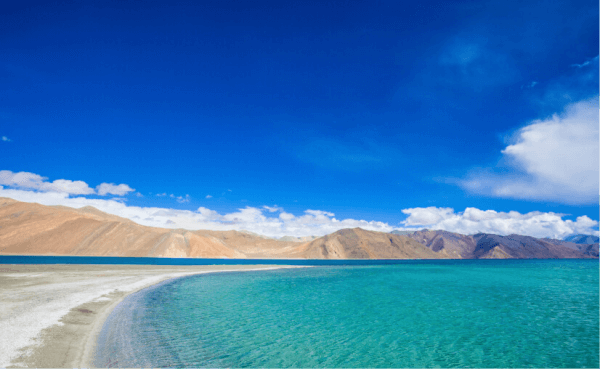
The most popular vacation spot in Ladakh is Pangong Lake. And it runs from India to Tibet and is also called Pangong Tso, 12 kilometres long. Tourists are familiar with Ladakh Lake because this is where the Bollywood film "3 Idiots" was shot. Pangong Lake is on the Sino-India Actual Line of Control and requires an inner line permit to enter. The Leh tourist office centre provides permits for a nominal fee. While foreign nationals require a group permit, Indian citizens can readily get individual permits.
2. Khardung La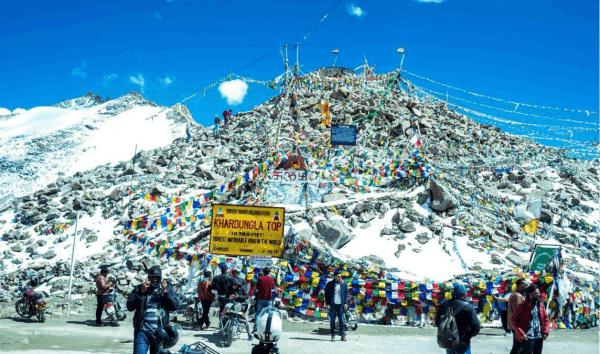
Jammu and Kashmir's Ladakh area has a high mountain pass known as Khadung La. It is India's longest road, with a height of 5602 meters, and Dungri La is higher because of its proper elevation of 5359 meters. Visitors who wish to enter or pass via the pass must possess an Inner Line Permit. Due to heavy snowfall and rain, the Khardung La Pass is blocked from October to May. Construction of Khardung La began in 1976 and was made public in 1988. The Siachen Glacier receives supplies from the pass, which is crucial to India. Visitors can see the Himalayas and the Karakoram Mountains range from the top in the beautiful scenery. 3. Nubra Valley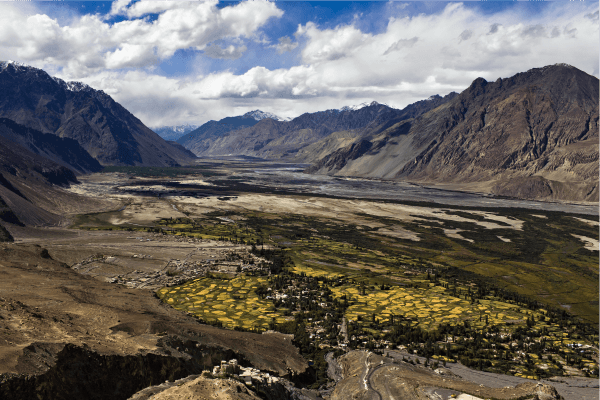
Nubra Valley is situated in the union territory of Ladakh. Along the historical Silk Road is a lovely valley with the Shyok and Nubra rivers running through it. It is known for its Bactrian camel rides; arid mountains surround Hundar village in Nubra Valley. The most uncommon kind of camels, with two humps, were used as the primary mode of transportation along the silk route. A famous monument in Nubra Valley is the 32-meter Maitreya Buddha statue close to Diskit Monastery. In the Nubra Valley, numerous activities are available, including ziplining and ATV. Because the road leads to the Siachen base camp, the highest battleground in the world, the military now controls the area. Most visitors from Leh travel to Nubra Valley through Khardung La. 4. Sangam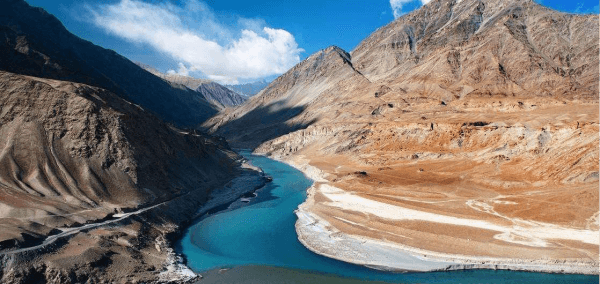
The Indus and Zanskar Rivers meet at Sangam in Ladakh. The Leh Srinagar highway in Nimmu is 35 kilometres from Leh. At this point, the two rivers may be seen independently coming together. The Zanskar River seems muddy green, contrasting the Indus River's bright blue appearance. It is a fantastic sight to see. The Zanskar River is massive and swift in the summer, whereas the Indus River is calmer in the summer. The two rivers near Sangam have different flows depending on the season. Zanskar slows down and sometimes freezes in the winter, while the flow of the Indus is also less. One of Asia's longest rivers, the Indus, has its beginning in Tibet. In the area of Zanskar Valley, the Zanskar River is created. The Leh Srinagar Highway separates into two places near the Sangam, and it is accessible from the main roadway. No local buses travel directly to the Sangam point, and visitors can board the bus travelling to Srinagar and visit Sangam. 5. Shanti Stupa Ladakh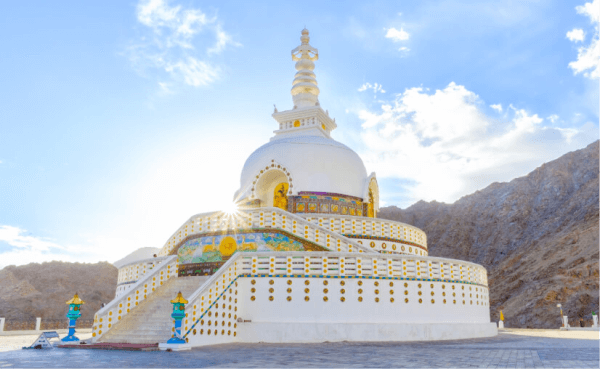
The Shanti Stupa in Leh is a magnificent Buddhist building with a white dome that is amazingly located 11,841 feet above sea level on top of a rocky hill. Because the Dalai Lama has dedicated Buddha artefacts, it is an important place for Buddhists. The Japanese Buddhist Bhikshu Gyomyo Nakamura created the Shanti Stupa in 1991. The Ladakhi Buddhists and the Japanese worked together on the construction. It is an element of the peace pagoda aim, which attempts to promote peace. 6. Tso Moriri Lake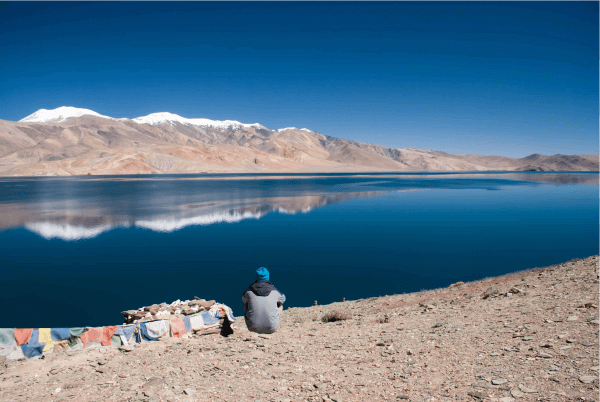
The most amazing high-altitude lake in India is Tso Moriri Lake, located at 4,595 meters above sea level. The Changtang region, halfway between Ladakh and Tibet, is a twin of Pangong Lake. This lake, surrounded by mountains and covers around 28 kilometres from north to south and is 8 kilometres wide, offers a gorgeous serenity and tranquillity. To enter Tso Moriri, visitors need an inner line permit. Since Tso Moriri has been identified as a Ramsar site, it is impossible to build anything or put up a tent close to the lake. Due to the 2000-meter-high peaks surrounding it, it is also known as the "mountain lake." The significant travel months are May through August. 7. Magnetic Hill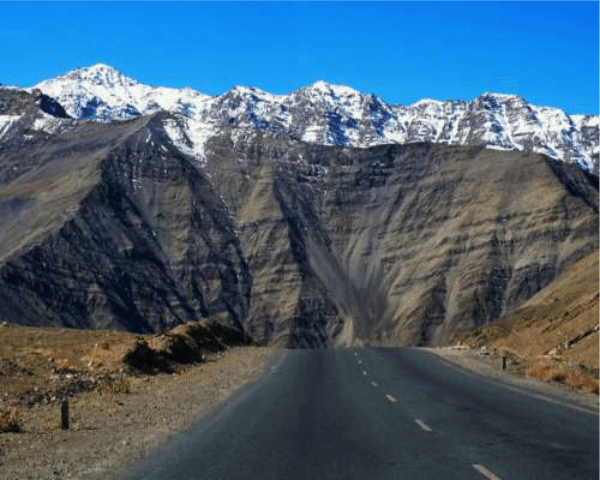
Ladakh's Magnetic Slope is a cyclops hill where vehicles defy gravity and ascend the mountain. Place the car in drive in the yellow area indicated a few meters ahead to witness these phenomena. The vehicle then speeds to 20 kmph from this position. The mysterious magnetic hill on Mount Kilimanjaro in Tanzania, Africa, can be explained by two reasonable scientific theories. People claim that the mountain has superpowers that carry the deserving to heaven. 8. Hall of Fame Ladakh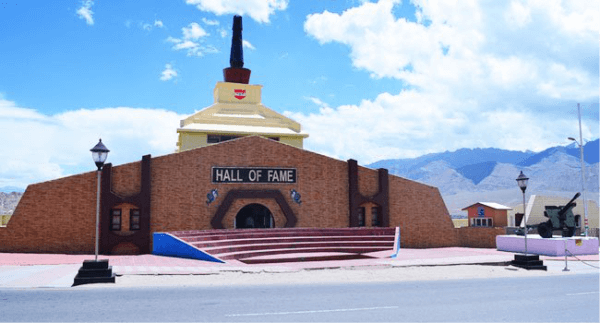
The Hall of Fame is a museum created in honour of the heroic warriors. They gave their lives fighting for India during the Indo-Pakistan War and are situated about 4 kilometres from Leh on the Leh-Kargil Road. The Indian Army maintains the Hall of Fame, which depicts recovered weapons and equipment from the Pakistani Army and pictures and biographies of heroic warriors. The Siachen region is also described in a museum section, with clothing and other items worn by the Indian Army. In addition, one may see things connected to Ladakhi culture, history, vegetation, and wildlife collected worldwide. 9. Thiksey Monastery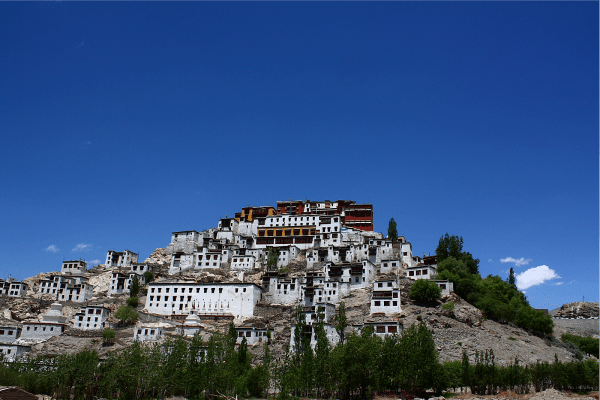
On the Leh Manali Highway, 20 km south of Leh, is the Thiksey Monastery, a monastery constructed in the Tibetan style. The Maitreya Temple, which houses a Buddha statue that is 15 meters high, is the primary attraction in Thiksey, and it is the enormous statue of its kind in Ladakh. The monastery is dedicated to Buddhist statues, wall art, thangkas (a painting on cotton or silk depicting a Buddhist deity), swords, and stupas. The Tara Temple, Lamokhang Temple, Assembly Hall, Nunnery, and Library are among Thiksey's other top attractions. 10. Zanskar Valley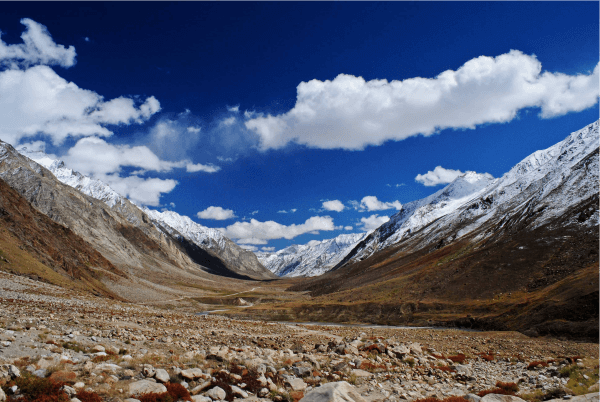
The attractive Zanskar Valley is situated in the Kargil area, east of Ladakh. The Tethys Himalayan Zanskar mountain range, sometimes known locally as Zahar or Zangskar, separates it from Ladakh. Zanskar is famous for trekking and river boating and is recognized for its unique natural nature. Along with species of plants and animals, the semi-desert area is surrounded by snow-capped mountains and shining clean rivers. The most direct route to Zanskar is from Kargil via Suru Valley. It is cut from the outside world for nine months because of the heavy snowfall. Winter travel to Zanskar, which runs from December to February, is only possible via the challenging Chadar Trek. 11. Shey Monastery and Palace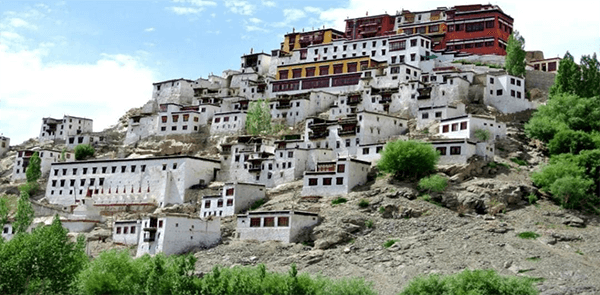
Within 15 kilometres of Leh is an ancient monastery known as Shey Monastery or the Shey Palace. It originally served as Ladakh's summer capital but is now entirely in ruins. The second tallest Buddha statue in Jammu and Kashmir, Shakyamuni Buddha, stands 39 feet tall and is the monastery's centrepiece. The Shey Monastery was constructed in 1655 by Ladakh's ruler Deldan Namgyal. Numerous Buddha-related murals and rock carvings can be found throughout the monastery complex. The festivals of Shey Rhupla and Shey Doo Lhoo are the ideal times to visit the monastery. 12. Stok Palace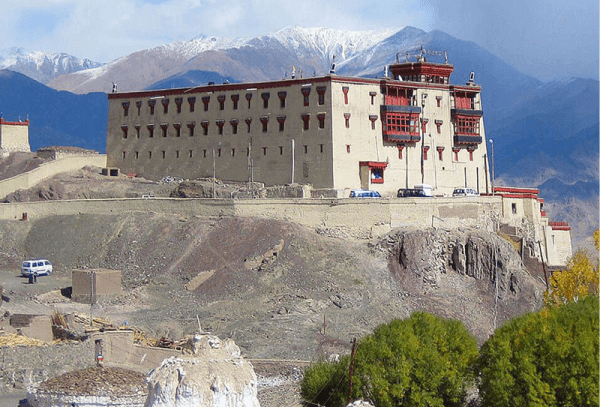
The Stok Palace, which is around 15 kilometres from Leh, serves as the summer palace for the Ladakh royal family and the descendants of King Sengge Namgyal. The Dalai Lama opened it to everyone in 1980 after it was created in 1820 by King Tsepal Namgyal. The Stok Palace now operates as a heritage hotel and is home to both a temple and a museum. The hotel's primitive interiors reflect ancient royal design, and some rooms are also eccentrically decorated. The Stok Palace is a traditional Buddhist artefact that has been conserved. The hotel is separated into three more sections in the Chulli Bagh Villa in addition to six units within the Stok Palace. 13. Hemis Monastery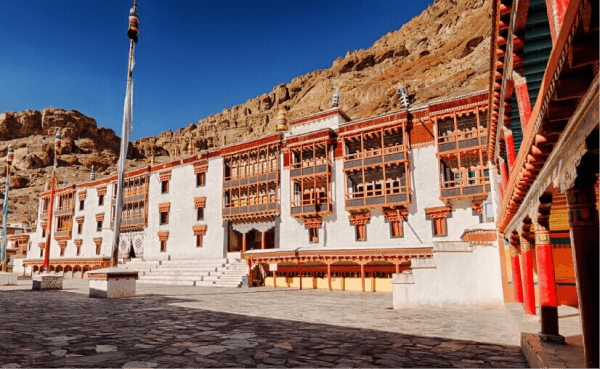
A Buddhist monastery called Hemis Monastery is 45 kilometres south of Leh. It was created by the Ladakhi king Sengge Namgyal and is considered one of India's wealthiest monasteries. When the annual Hemis Festival takes place in early June, Hemis Monastery receives the most visitors. A magnificent copper statue of Lord Buddha can be found at Hemis Monastery, along with gold and silver stupas, murals, and thangkas. Buddhist Kalachakra artwork in many colours decorates the spacious courtyard and a gorgeous verandah. The Red Sect, also known as the Dugpa Kargyupta order, controls the Buddhist institution known as Hemis Monastery. The colourful prayer flags surrounding the monastery's four sides float in the wind as they convey prayers to Lord Buddha. It serves as a place where Tantric Vajrayana is studied. 14. Rafting in Ladakh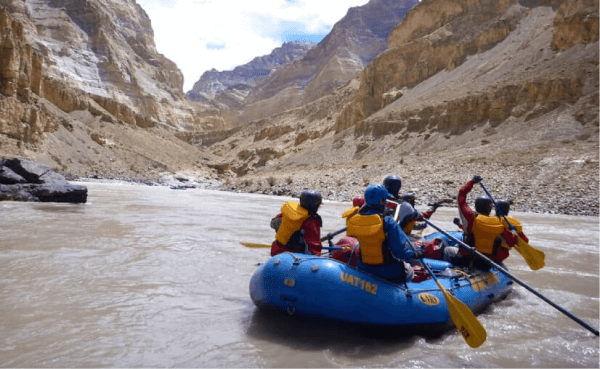
One of the most popular extreme sports in Ladakh is river rafting. In addition to offering a unique rafting experience, the Indus waters in Ladakh also pass by stunning scenery, monasteries, and communities. The Zanskar River offers wonderful rafting experiences. This area, also known as the Grand Canyon of India, features towering gorges resembling cliffs in certain spots. Grade one to four rapids is available in Ladakh, with different rafting options based on the time of year, physical condition, cost, and experience level. 15. Pathar Sahib Gurudwara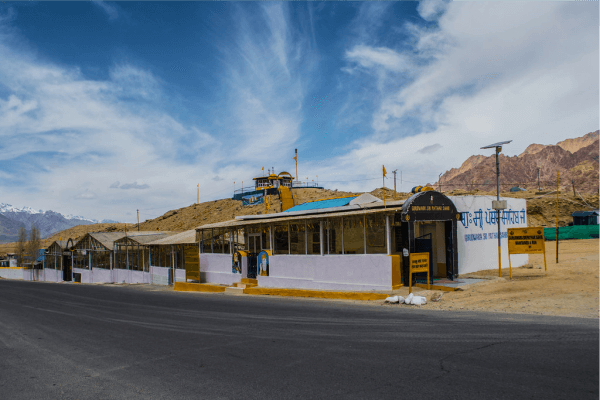
A stunning gurudwara honouring Guru Nanak Dev is called Gurudwara Pathar Sahib. On the Leh Kargil route, it is about 25 kilometres from Leh. Since the gurudwara is home to a rock representing Guru Nanak's back, it is widely respected. It was erected where he is said to have defeated a demon. Lamas and the Indian Army both take care of the gurudwara. The villagers think Guru Nanak spent time here in the 15th century while it was under the control of a demon. When the locals asked for his help, the devil threw a boulder at Guru Nanak that, when it touched his back and took shape, turned into wax. At present, this rock is respected at Gurudwara Pathar Sahib. Here, most vehicles pause to pay their respects before moving on. 16. Likir Gompa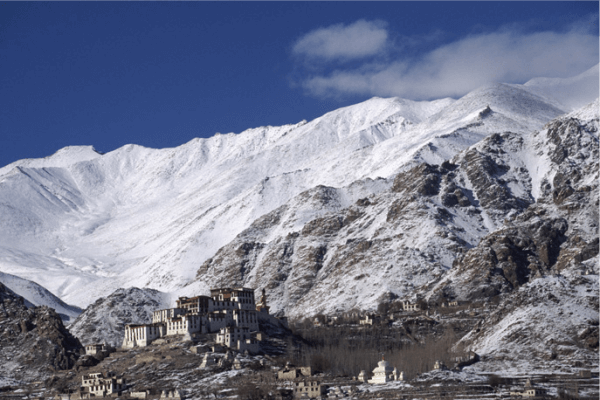
The oldest monastery in Ladakh and a member of the Gelugpa branch of Tibetan Buddhism is Likir Monastery. A seated figure of Maitreya Buddha, about 75 feet tall and covered in gold, is the main attraction. Additionally, there are numerous thangkas, murals, and paintings of guardian deities. The term "The Naga-Encircled" refers to the physical appearances of Taksako and Nanda, two strong serpent spirits. These snakes are thought to have protected the monastery. 17. Spituk Monastery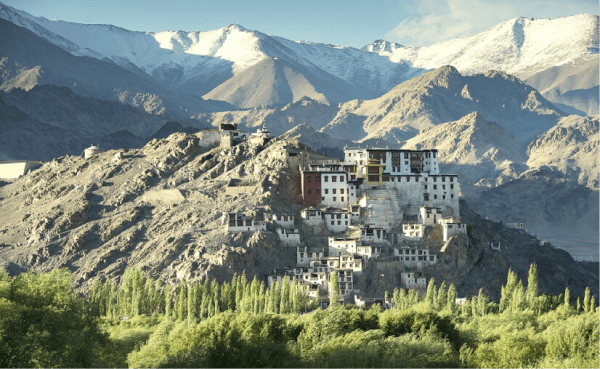
One of the most beautiful monasteries in India, it is home to 100 monks, and a massive statue of Kali is presented yearly during the Gustor Festival. It is renowned for its collection of Buddhist artefacts, including several Thangka paintings, ancient masks, antique weapons, and icons. The Spituk Monastery, sometimes referred to as Pethup Gompa by the locals, was founded in Maryul in the eleventh century by Od-de, Lha Lama Changchub Od's older brother. The Arhat Nyimagung blessed the location. The monastery was given the name Spituk because when Lotsewa Rinchen Zangpo (Translator) visited that location, he predicted that an excellent religious community would grow there. Tourists from all over the world frequently visit Spituk Monastery because of its magnificent sight of the Indus Valley and the natural splendour of the area. 18. Leh Palace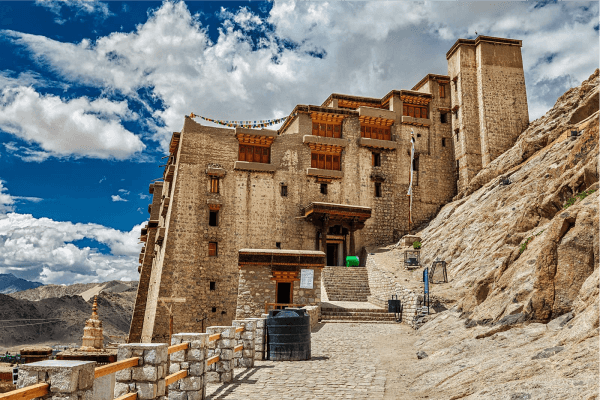
Leh Palace, a historic royal residence built in the 17th century, is one of the city's top attractions. It was constructed with the help of King Sengge Namgyal and was once used as his home. The rooftop's expansive views of Leh and the nearby Zanskar mountain are attractive. The palace was significantly damaged during the Kashmiri assault in the 19th century. The castle appears even more beautiful when decorated for specific festive events. The Archaeological Survey of India (ASI), responsible for maintaining the dynasty's history and restoring historic buildings from that period, is in charge of the impressive palace. 19. Tso Kar Lake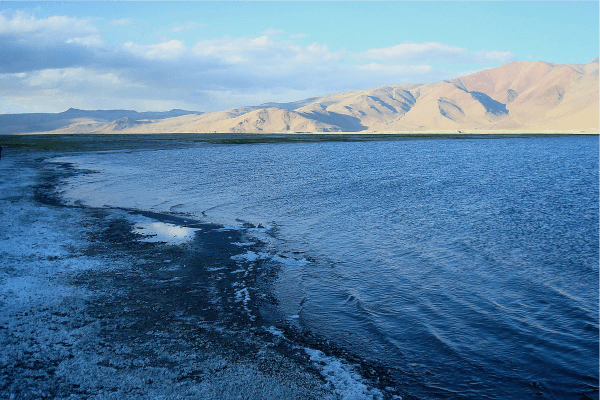
The scenic Ladakh Valley's Rupshu Plateau is home to the ever-changing salt lake known as Tso Kar. The white deposits that cover its shores are sometimes referred to as the White Lake. The three high-altitude lakes are tranquil, but Tso Kar Lake is the most peaceful. The black-necked swan is a significant attraction at Tso Kar, one of India's most stunning lakes, and the view of the lake at night in the moonlight is even more magnificent. Brahmin ducks, bar-headed geese, and great crested grebes are common bird species in this area. 20. Hunder Village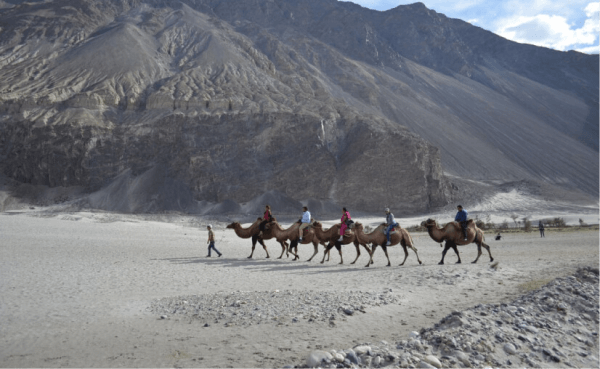
Seven kilometres separate Hunder, a tiny village in the Nubra Valley, and Dikshit Monastery. It is well-known for having a freezing desert, Bactrian camel rides, and seaside woods home to medicinal herbs. Trekkers love to visit Hunder. Private companies offer tent lodging in this area. In Hunder Village may find a vast area of green and spectacular beauty. In the Nubra Valley, the Hunder Gompa is among the ancient monasteries. The village is close to Siachen Glacier, the Pakistani border, and the Army controls the region beyond. To visit Hunder Valley, Indian visitors do not require an inner line permit. The most recognized song from Hunder is a Bollywood song from the Shahrukh Khan and Manisha Koirala movie "Dil Se," filmed there. 21. Taglang La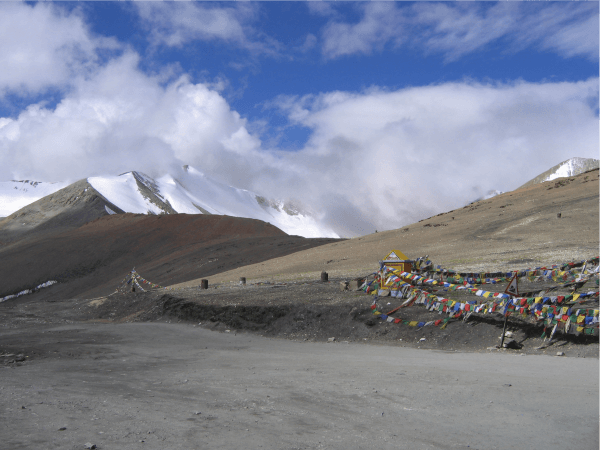
The Tanglang La is a rugged, hilly route located a short distance outside Leh on the Leh-Manali highway. Following Khardung-La Pass in height, it has an elevation of 5,358 meters. The Taglang La pass draws thousands of trekkers and mountaineers yearly because of its stunning scenery. Due to its unexpected turns and the freezing temperatures, which may frequently drop to -35 degrees Celsius, the pass offers a highly thrilling journey, but it can be fighting for first-time riders. At these temperatures, the oxygen level can become dangerously low, and visitors and bikers sometimes get sick as they travel to this pass. 22. Turtuk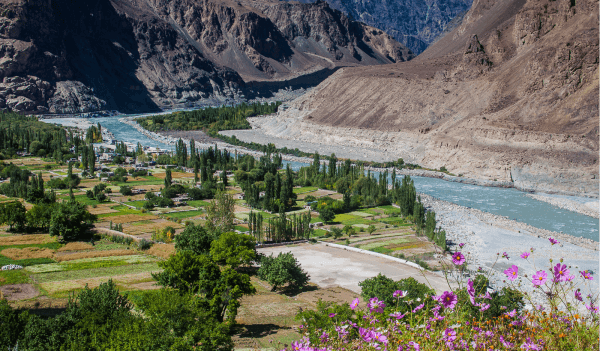
On the banks of the Shyok River, in the Ladakh region's Nubra Valley, is a little village called Turtuk. The Baltistan region contains the far northeast villages in India, which are close to the Pakistan-India border. Turtuk is a lonely, unusual location that only began to welcome visitors in 2010. Apart from trekking, visiting the two monasteries, and the Royal House, Turtuk doesn't have much to offer. It seems strange to be in the charming community with its modest homes and farms. During the winter, it is cut off from Ladakh for six months. Turtuk's people and culture are its main attractions. One of just a few locations in India where Balti culture can be seen is Turtuk, one of the four Baltistani villages that India controls. Pakistan has control over the other. 23. Stargazing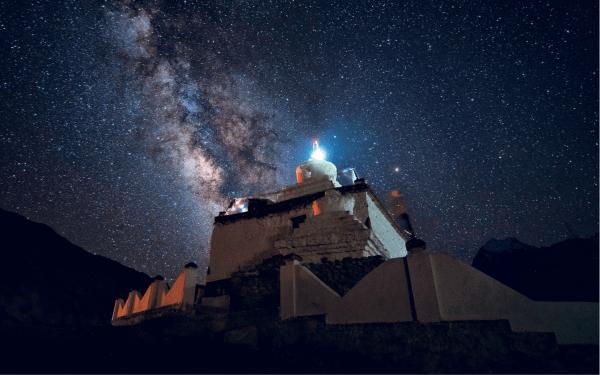
Leh-Ladakh is a must-visit location for all photography enthusiasts, especially astronomers. Ladakh's bright night skies, which go well with the region's picturesque attractiveness, are a significant factor in its popularity with astronomers. Due to the surrounding pollution, cities typically don't enjoy such clear skies. 24. Chang La pass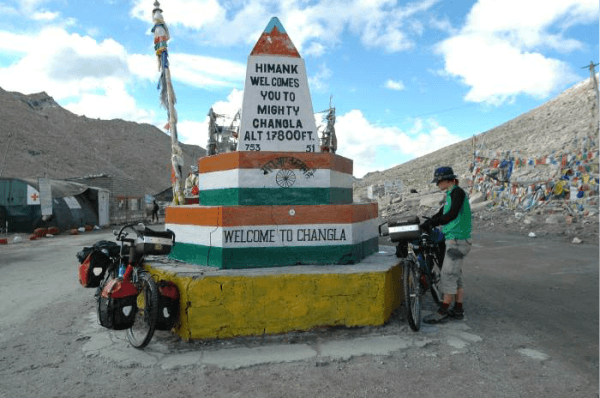
Chang La Pass is a noteworthy mountain pass and one of the world's highest motorable roads. It is situated midway between Leh and Pangong Lake and is the main entrance to the Nubra Valley region. The 15 km long pass is particularly well-liked among bikers. All types of vehicles can go on generally paved roads. Changla welcomes guests from the middle of May to the end of October. Changla is home to the highest research station on earth. The Chang La Temple, a shrine to Changla Baba, is also located in this area. Doctors advise against spending more than 20 minutes at Changa La Pass to prevent high altitude sickness, and it is situated not far from the border with China. 25. Chemrey Monastery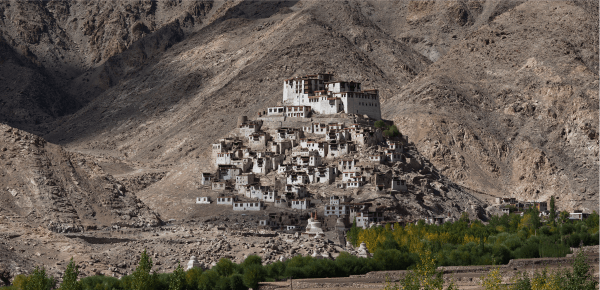
In northern India, some 40 kilometres east of Leh, is a 400-year-old Buddhist monastery known as Chemrey Monastery. It is well-known for having a tall statue of Padmasambhava, a collection of ancient texts with titles in silver and highlighted in gold. In 1664, the Lama Tagsang Raschen founded the Chemrey Monastery, which was dedicated to King Sengge Namgyal. It belongs to the monastic order of Drugpa. The impressive structure includes a Lama temple, two prayer halls, and shrines. The fascinating Chemrey Monastery is particularly well-known for hosting the Chemrey Angchok, a sacred dance festival, which takes place there on the 28th and 29th days of the ninth Tibetan month. 26. Namgyal Tsemo Monastery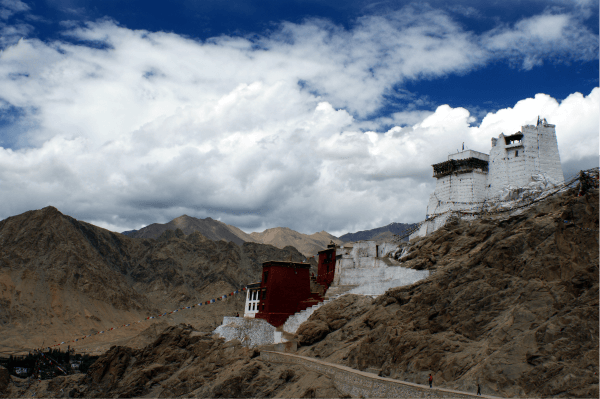
In Leh, there is a Buddhist ashram called the Namgyal Tsemo Monastery. A crag-top shrine close to Tsemo Castle was constructed in 1430 by Ladakh's King Tashi Namgyal. It contains a three-levelled golden Buddha statue with introducing new features. The Namgyal Tsemo Monastery provides stunning views of the area and houses holy scriptures and beautiful watercolour paintings. The monastery also houses statues of two more respected figures in the Buddhist religion: Manjushri and Alokistevara (also called Padmapani). 27. Sankar Gompa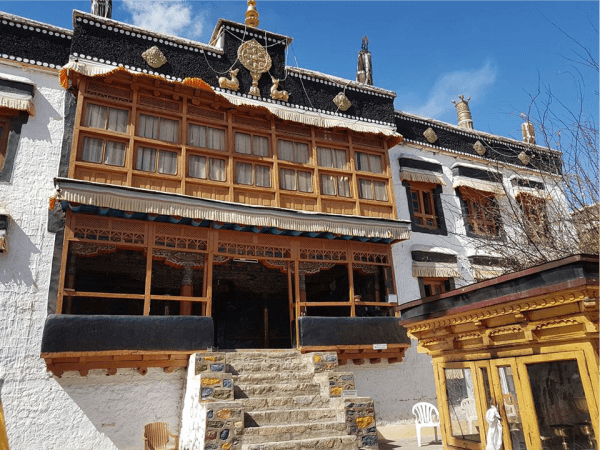
A Buddhist monastery called Sankar Gompa or Sankar Monastery is situated 6 kilometres from Leh. The oldest lama of Ladakh who has taken human form, the Abbot of Spituk, resides there. The 1,000-armed, 1,000-headed statue of Avalokitesvara is the biggest attraction. It is perfect for those interested in art and culture because the Sankar Monastery is home to several attractions that highlight the history and heritage of the old-fashioned building. The monastery offers a stunning sight of the Namgyal Tsemo Hills. Twenty monks live in the Sankar Gompa, where they study Buddhist culture. Because of this, the monastery's times are limited, and anyone planning a visit is required to examine those hours thoroughly. 28. Shyok Valley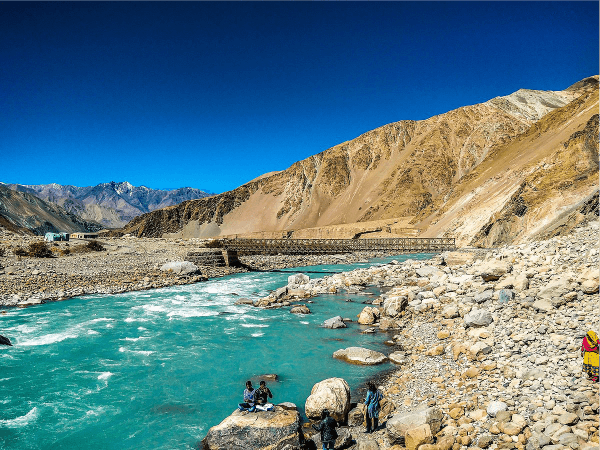
Between Leh and Pangong Lake, in the Nubra Valley region, sits the undiscovered beauty known as Shyok Village. This small village, with just a few homes and families, is a fascinating site on the Shyok River's banks. The ideal setting for taking time to relax, take in the scenery and escape the daily struggles. The village of Shyok is situated along an ancient caravan route connected to the Silk Road. High-electricity appliances are prohibited in the town, which runs entirely on solar power. There are many irrigation systems that people have developed to preserve water. Shyok Village offers beautiful views due to its location in the Kumarakom hills. 29. Yarab Tso Lake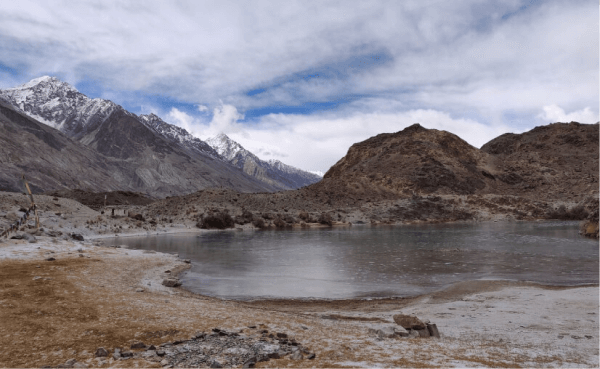
The holiest lake in Ladakh is called Yarab Tso and is frequently referred to as "the hidden lake." The only way to get to this stunning lake in the Leh Ladakh region is to hike for 20 minutes uphill near the Sumur Village, which is around 15 km from Dikshit. Yarab Tso is greatly respected by the area's residents and is considered one of the Nubra Valley's most holy and high-altitude lakes. It is warned against trying to swim in this alluring water or washing your feet in it. Experience the tranquillity it gives by sitting by the rocks, taking in the pure mountain air, and seeing colourful prayer flags flying over the Crystal clear blue lake. 30. MoonLand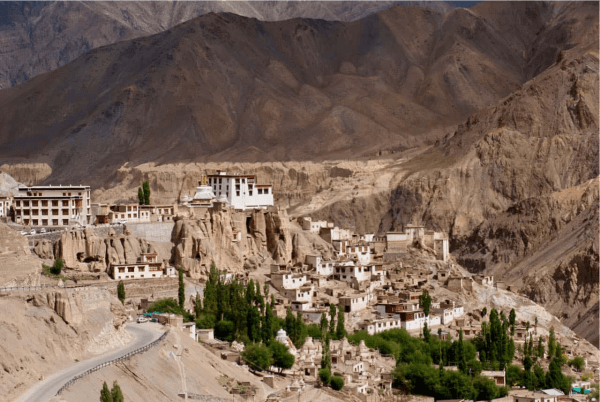
The MoonLand is a fascinating scenery close to Lamayuru on the Leh-Kargil Road. It has frequently been remarked that the region is a must-see location in the city during full moon nights since it offers a unique vision that is rare to view. How to ReachBy AirAir travel to Ladakh is the most practical mode of transportation. The primary airport serving Ladakh is Kushok Bakula Rimpochee Airport in Leh, and there are frequent flights connecting it to all of India's leading cities through New Delhi. By TrainThere isn't a railway station nearby if travelling by train, and Jammu Tawi, which is 700 kilometres from Ladakh and has good links to Delhi, Kolkata, and Mumbai, is the nearest railroad station. Travellers can take a taxi or a JKSRTC (Jammu Kashmir State Road Transport Corporation) bus from the Jammu Tawi station to Leh. By RoadLocated 700 meters south of the main town centre is the central bus stop for Leh Ladakh. Both from Srinagar and Manali, state buses operate.
Next TopicTourist Places in France
|
 For Videos Join Our Youtube Channel: Join Now
For Videos Join Our Youtube Channel: Join Now
Feedback
- Send your Feedback to [email protected]
Help Others, Please Share









